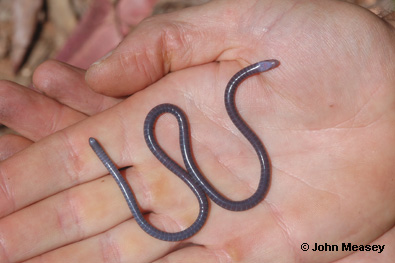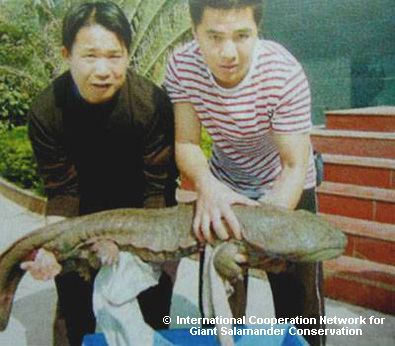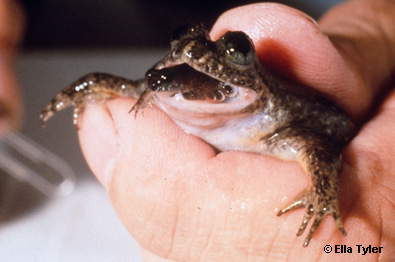Life in Cold Blood, the sixth and final series of the ground-breaking Life nature documentaries written and presented by Sir David Attenborough, is currently being broadcast on the BBC. This series will take a long-awaited look into the lives of amphibians and reptiles, which can be more fascinating and complex than you might expect. The second episode, entitled Land Invaders, looked at the weird and wonderful world of amphibians and there we saw many Evolutionarily Distinct (ED) and EDGE Amphibian species, which because of their unique evolutionarily history have often evolved curious looks or behaviours.
The Life in Cold Blood team filmed for the first time the young of the Taita African caecilian (Boulengerula taitanus) feeding on the skin of their mother for essential nutrients. It is thought that other species in the same genus, including the EDGE Focal Amphibian the Sagalla caecilian (Boulengerula niedeni), may also eat their mother’s skin for nourishment, however the unusual behaviour is so elusive it has yet to be recorded in any other species.
The episode also featured the Japanese giant salamander (Andrias japonicus), one of only three living giant salamander species, males of which defend their territory vigorously. The largest of these, the Chinese giant salamander (Andrias davidianus), which can grow to an astounding 1.85 metres, is also the most endangered; classified as Critically Endangered by the IUCN, habitat degradation and over-collecting for food and traditional medicine threaten the survival of this distinctive creature.
An example of the remarkable behaviour that an evolutionarily distinct species has evolved was seen in the Australian marsupial frog (Assa darlingtoni). After mating, the males of this species wait by the developing eggs for days until the eggs are ready to hatch, at which point the young crawl into skin pockets along their father’s sides where they complete their development. This species is from a family of frogs with many bizarre examples of parental care, including the northern and southern gastric brooding frogs which, as their name suggests, cared for their young in their stomach. These two highly evolutionarily distinct species have unfortunately suffered extinction, representing the loss of a whole frog genus, as a result of the virulent chytrid fungus which is known to be causing amphibian declines worldwide.
The charity Froglife, which works for the conservation of amphibians and reptiles in the UK, is presenting a Life in Cold Blood Evening at the University Museum of Zoology, Cambridge, this Friday February 22nd, with behind the scenes footage from the series and guest speakers. At the event the EDGE Amphibians coordinator, Helen Meredith, will be speaking in more detail about the conservation work that we are planning for this recently-launched section of the EDGE of Existence Programme.
For more information on this event visit the Froglife website


